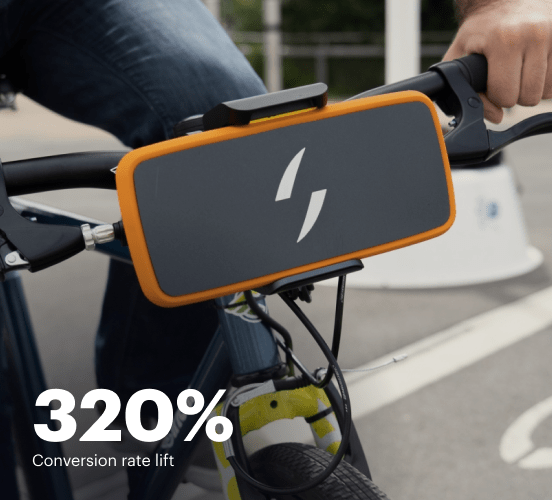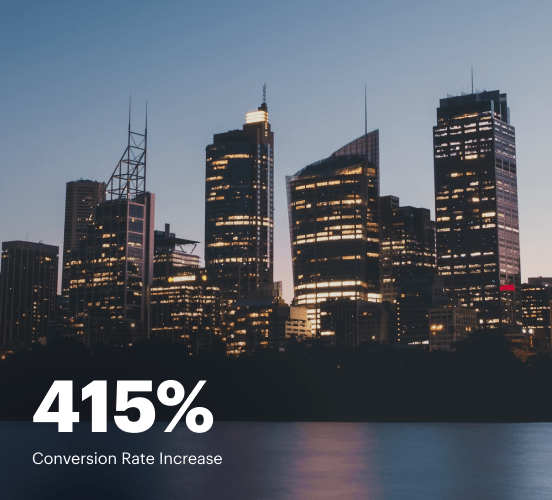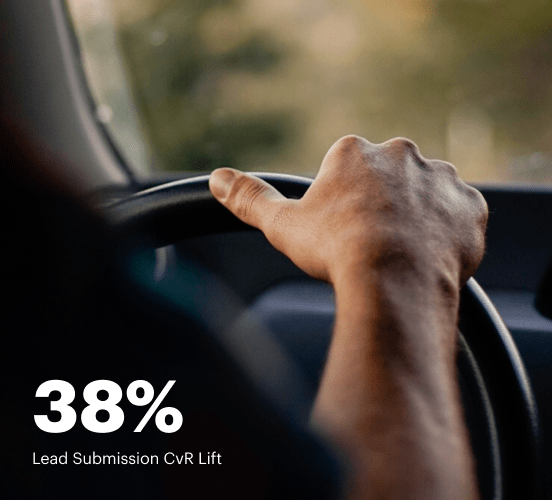How Weebly vs. Drupal vs. Instapage stack up against each other
Compare Instapage with Weebly and Drupal to create high-converting landing pages. With personalization, optimization, and collaboration tools, Instapage helps you deliver experiences that drive results.
Get startedSee how Instapage stacks up against the competition
| Feature | Instapage | Other builders |
| Drag-and-Drop Tools | ||
| Conversion-optimized templates | ||
| Manual and AI-powered A/B Tests | ||
| AI content suggestions | ||
| Popups and sticky bars | ||
| Canvas and grid blocks | ||
| Reusable and global elements | ||
| Form and popup builders | ||
| Built-in Heatmaps | ||
| Central analytics dashboard | ||
| Ad-to-page personalization and collections | ||
| Contacts, lists, and email | ||
| Dedicated, full-service CRO experts | ||
| Enterprise-ready platform |
Leading the way in building high-performing landing pages





Why Instapage is the smarter choice for your campaigns
Get everything you need to build, scale, and optimize high-converting landing pages—without coding.

Easier page building without coding
Instapage offers a flexible and seamless page creation experience with a library of 500+ conversion-focused layouts, Instablocks®, a drag-and-drop builder, and AI content generation. With technologies like Thor Render Engine®, you can create on-brand, mobile-responsive landing pages that load quickly and start converting during initial visitor clicks.

More insights — better results
Instapage lets you see in detail how each landing page experience and variation is performing so you can make targeted changes that boost page conversions. Use heatmaps for a better understanding of on-page activities, run A/B tests and AI-assisted experiments, and then track and evaluate results within robust analytics dashboards.

More personalized experiences
Instapage lets you quickly create high-performing landing pages tailored to each of your ad campaigns. Deliver personalized experiences for distinct audiences using dynamic text replacement. Effortlessly align specific advertisements to unique pages with AdMaps. Monitor audience-level metrics using our advanced data tools.

Built-in collaboration
Instapage collaboration capabilities bring your entire team together to speed up the process of landing page review, approval, and launch. No more frustrating and unnecessary revisions or edits scattered across emails. Provide instant feedback, conduct real-time page edits, and securely share your pages with outside stakeholders.

Free up time for your business
Invest time into business growth, not busy work. Launch landing pages faster with reusable forms and templates. Build once, reuse forever.
Explore all integrations






Easier page building without coding
Instapage offers a flexible and seamless page creation experience with a library of 500+ conversion-focused layouts, Instablocks®, a drag-and-drop builder, and AI content generation. With technologies like Thor Render Engine®, you can create on-brand, mobile-responsive landing pages that load quickly and start converting during initial visitor clicks.
More insights — better results
Instapage lets you see in detail how each landing page experience and variation is performing so you can make targeted changes that boost page conversions. Use heatmaps for a better understanding of on-page activities, run A/B tests and AI-assisted experiments, and then track and evaluate results within robust analytics dashboards.
More personalized experiences
Instapage lets you quickly create high-performing landing pages tailored to each of your ad campaigns. Deliver personalized experiences for distinct audiences using dynamic text replacement. Effortlessly align specific advertisements to unique pages with AdMaps. Monitor audience-level metrics using our advanced data tools.
Built-in collaboration
Instapage collaboration capabilities bring your entire team together to speed up the process of landing page review, approval, and launch. No more frustrating and unnecessary revisions or edits scattered across emails. Provide instant feedback, conduct real-time page edits, and securely share your pages with outside stakeholders.
Free up time for your business
Invest time into business growth, not busy work. Launch landing pages faster with reusable forms and templates. Build once, reuse forever.
Explore all integrationsGet started with Instapage in a few steps
-
Create your Instapage account
Start with Instapage by signing up via Google or your email. You'll get access to a free 14-day trial to discover Instapage capabilities. Feel free to cancel anytime during the 14-day trial if you decide that our product is not suitable for your business. -
Build and personalize your page
Create your first landing page from scratch or choose a template from 500+ customizable layouts. Use the drag-and-drop builder to add page elements, fonts, and backgrounds, refine content with AI, or add custom HTML, Javascript, and CSS. -
Review and make edits
Collaborate on page designs and streamline review processes. Invite your team members and stakeholders to review, edit, and provide feedback on your landing page. Collaborate knowing your page is confidential and only accessible to authorized users. -
Publish and track page performance
Publish your page to a domain or custom URL. Connect your pages to the ads you've created and track page performance within the analytics dashboard, run A/B tests and AI experiments, analyze results, and continuously optimize your landing page to maintain high conversions.
Instapage vs. Weebly vs. Drupal – The Great Platform Showdown
Choosing the best landing page builder can feel a bit like putting together your dream team in a fantasy league. Each contender brings unique strengths to the table, making the choice both exciting and daunting. This comparison features three heavyweights: Instapage, Weebly, and Drupal. Each of these platforms is well-respected in the arena of web development and marketing, with different emphases that cater to various user needs. While Weebly is known for its simplicity and ease of use, and Drupal is often celebrated for its flexibility and scalability, Instapage stands out with its primary focus on creating engaging landing pages that drive conversions. As we proceed, the goal is to lay out the strengths and weaknesses of each contender in a straightforward manner, making it easier to determine which one aligns best with your marketing strategy and goals. (This section will set the stage for our detailed round-by-round comparison.)
Meet the Competitors: A Brief Introduction
Now that we've established the importance of the choice ahead, let's take a closer look at the contenders. Instapage, which positions itself as a powerhouse for landing page optimization, specializes in providing marketers with tools that help reduce costs, enhance conversions, and deliver tailored landing page experiences. By doing so, it builds brand trust, customer loyalty, and higher conversion rates. Weebly, often described as beginner-friendly, allows users to easily create websites with its straightforward drag-and-drop interface—ideal for those looking for a quick setup without complex features. On the other hand, Drupal is a mature content management system (CMS) that offers unmatched flexibility for more advanced users, enabling them to customize their sites in ways that fit their specific business needs. This eclectic mix of platforms invites us to explore their distinctive strengths as we compare features, performance, usability, support, and pricing. (Introduce the reader to why these differences matter in the context of landing page building.)
Feature Comparison - The Battle for Functionality
A Look at Template Diversity and User Experience
When it comes to available templates, Instapage leads the pack with a diverse selection of professionally designed templates. These templates are not only aesthetically pleasing but are also fully customizable, allowing marketers to tweak them as needed to fit their brand's personality. Weebly, in contrast, offers a limited selection of themes—great for beginners but potentially restricting for users seeking something unique. Its simplicity shines with an intuitive interface that offers easy drag-and-drop functionality. Meanwhile, Drupal's template options can vary widely in quality and style due to its open-source nature; however, users may need the technical know-how to create and modify these templates effectively. This versatility allows experienced developers great freedom, but it may pose a steep learning curve for novices. Altogether, these features place Instapage at an advantage when targeting the landing page-specific goals of marketers, while Weebly and Drupal offer better adaptability for those with varying objectives. (Use comparisons to highlight the nuances of each offering in a friendly, engaging manner.)
Instapage: A Champion for Customization and Conversion
Instapage is essential for marketers looking to optimize their landing pages effectively. It empowers users with a rich set of customization tools and analytics that closely monitor how visitors engage with landing pages. Unlike Weebly and Drupal, which serve broader website-building needs, Instapage hones in on conversions, offering features like A/B testing, heatmaps, and dynamic text replacement. These tools enable users to tailor their pages based on visitor behavior, ultimately leading to increased conversion rates. Moreover, the platform's simple user interface allows marketers to create beautiful landing pages without needing a coding background. This combination of functionality makes Instapage an invaluable partner for businesses aiming to maximize their marketing investments and achieve significant results in their landing page strategies. (Emphasize the value of Instapage as a game-changer for marketers.)
Round Two – The Speed and Performance Matchup
Picture this: you're standing in line at your favorite coffee shop, eagerly awaiting your cup of joe, but the line is moving slower than molasses. Frustrating, right? Sound familiar? Slow-loading websites create similarly vexing experiences for users. Page load speeds can dramatically impact not only user experience but also SEO rankings. Therefore, assessing the speed each platform offers in distributing landing pages is vital. As we pit Instapage against Weebly and Drupal, we need to look into how quickly each platform can serve up your carefully crafted site.
Instapage Advantages:
- Offers fast load times through optimized pages that enhance user engagement
- Utilizes built-in AMP (Accelerated Mobile Pages) to boost mobile performance
- Provides analytic insights on page speed to enable continuous improvements
- Enables integration with a content delivery network (CDN) for improved global reach
Weebly Advantages:
- Simplistic design elements that load quickly due to limited complexity
- Built-in features that automatically optimize images for faster loading
- User-friendly tools that require fewer resources, making pages efficient
Drupal Advantages:
- High-performance potential if optimized correctly by skilled developers
- Can utilize caching systems to enhance speed and performance significantly
- Allows for rigorous control over web development processes to maximize speed
Ultimately, while all three platforms have their methods for ensuring speedy performance, Instapage clearly approaches this aspect with the foresight necessary for marketers. By emphasizing not only speed but also real-time insights, Instapage ensures that their users have the tools to maintain rapid and responsive landing pages—key to retaining potential customers. With Weebly and Drupal also showcasing their strengths, it’s important to choose a platform that will keep user experience at the forefront.
Round Three – Usability: Navigating the Learning Curve
User experience often dictates how readily a platform can adopt a new tool. In this round, we evaluate how user-friendly each platform is for both beginners and seasoned professionals. Instapage prioritizes easy navigation and accessibility, with an intuitive interface and comprehensive tutorials for newcomers. This ensures that even those without technical skills can create high-converting landing pages quickly. Weebly goes a step further, incorporating a highly visual, drag-and-drop editor that speaks directly to its user base—mostly small business owners and individuals who don't want to deal with complex features. In contrast, Drupal can be more intimidating due to its intricate interface and the technical skills required for effective use; however, once you conquer that learning curve, the sky’s the limit with customizations. By consistently catering to users at all experience levels, each platform works to ensure a smooth user journey, but Instapage's focus on landing page creation provides a distinct advantage for marketers aiming to hit the ground running. (Encourage readers to explore each platform's interface and resources.)
Round Four – Support Services: The Backup on Your Quest
In marketing, a reliable support system can make all the difference when navigating challenges or seeking enhancements. This round focuses on the customer support each platform offers. Instapage shines with 24/7 live chat, email support, and an extensive knowledge base packed with webinars and tutorials. Weebly also offers robust email support coupled with a community forum and how-to guides, all designed to help users at various levels. Meanwhile, Drupal, while possessing a vibrant community of dedicated users for advice and collaborative problem-solving, can leave newcomers feeling isolated due to the limited direct support options provided. As with any tool, the key is finding the right level of support, and for those seeking comprehensive solutions, Instapage reigns supreme with its proactive customer service approach. (Highlight how user relationships can affect platform preference.)
Final Round: Pricing Strategies and Plans
Pricing is a critical factor in the decision-making process when selecting the right tool for your marketing needs. Instapage operates on a subscription model, with plans that cater primarily to users looking to maximize their marketing spend for gaining audience interactions. Starting with competitive average pricing, it delivers excellent value given its extensive features tailored for conversion optimization. Conversely, Weebly adopts a freemium model with a basic free plan, making it accessible for individuals who are just getting started but potentially limiting growth as one needs more advanced tools. Similarly, Drupal is open-source and free to use; however, it necessitates potential hosting and development costs, which can pile up and require additional investment for a fully functional site. Therefore, while all platforms possess their unique pricing structures, what stands out is Instapage's value in targeting marketers focused on results. (Guide readers in making the best economic choice for their needs.)
In conclusion, while all three platforms have something valuable to offer, the right choice will undoubtedly depend on the specific needs and objectives of the user. Instapage shines with its emphasis on effective landing page optimization, speed, and robust support, making it an ideal choice for marketers striving to maximize their ROI. Weebly's simplicity comes in handy for straightforward projects, whereas Drupal's flexibility lends itself to more complex use cases if one is willing to navigate through its intricacies. We encourage readers to assess what matters most in a landing page builder and to take advantage of Instapage's free trial to experience its unique offerings firsthand.










